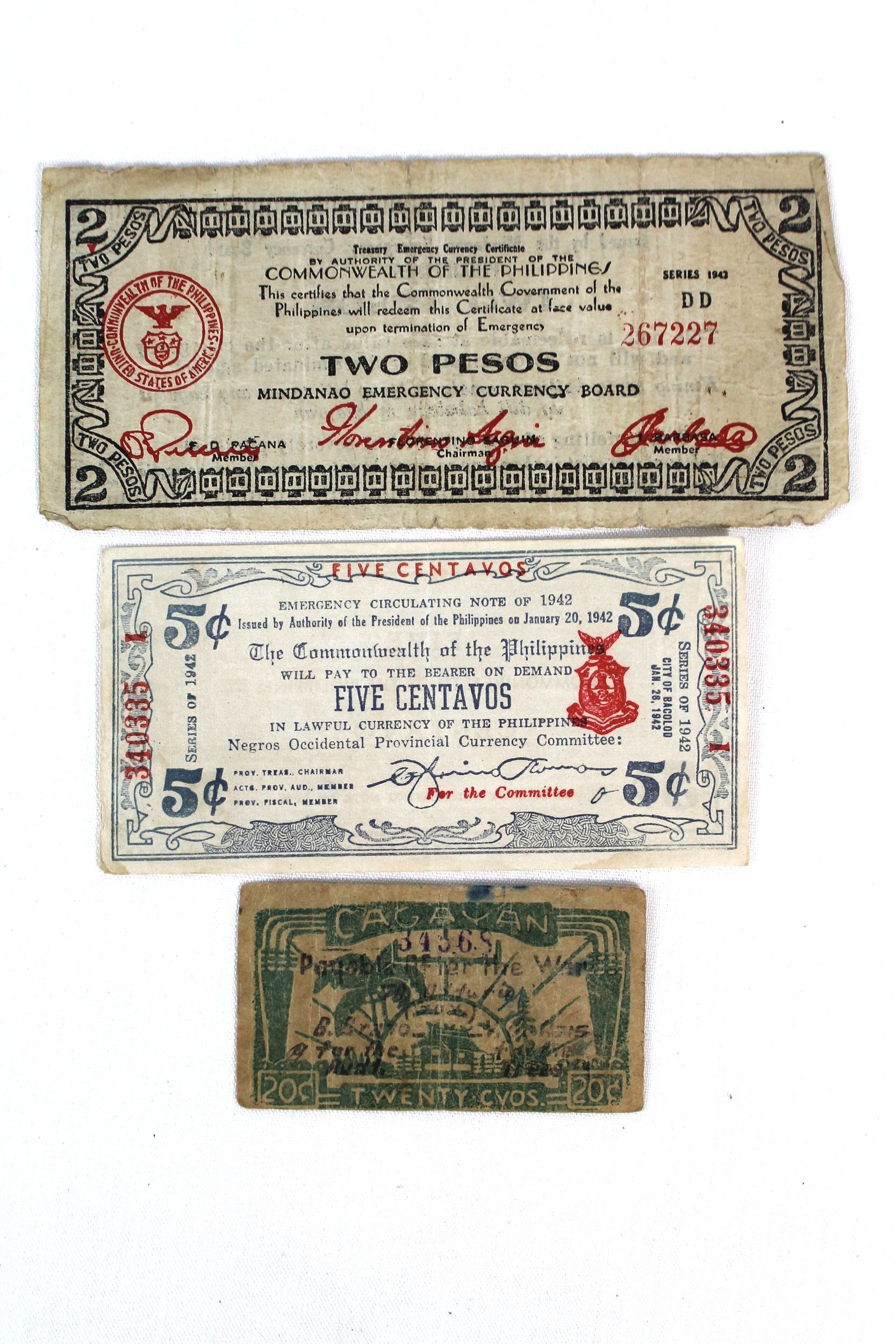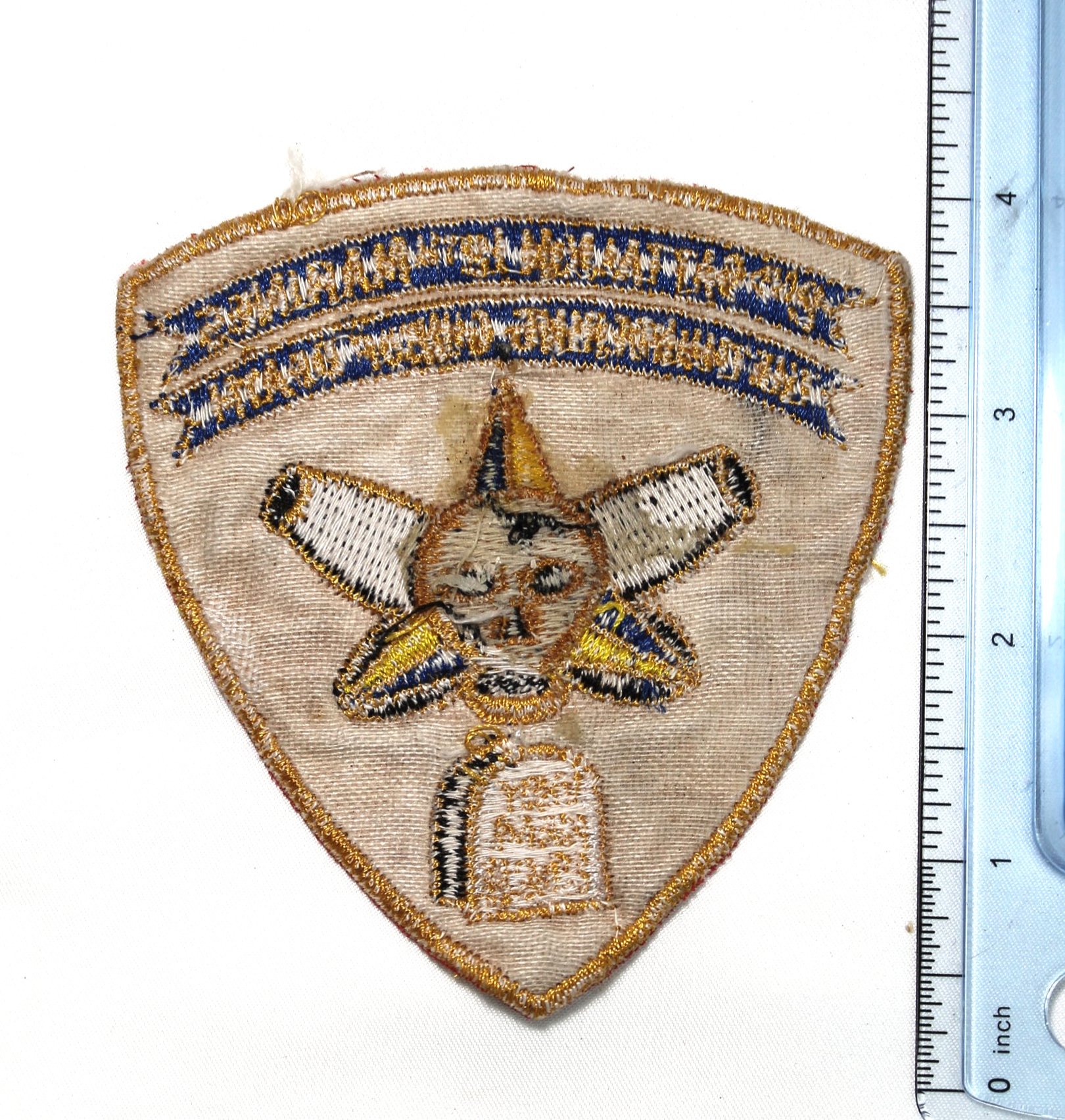WW2 Guerrila "Death Sentence" Currency of the Philippine Islands
Philippines, 1941 World War II struck the Philippines with unrelenting fury as the Japanese marches through the islands, conquering one after the other. Before the United States was defeated on Bataan Peninsula and the island of Correqidor, General Douglas MacArthur organized guerrilla resistance against the Japanese and his famous words, “I shall return.” lit a flame which became the underground battle cry that the Japanese were powerless to silence.
There was hardly a corner of the Philippines in which guerrilla groups did not flourish, although ill-equipped, ill-fed and living in daily confrontation with death. Financing the guerrilla resistance played an important role in the war and a large variety of paper money was issued in each province. In fact, the incredible number of notes issured indicated the daith and courage the Filipino’s had in the future. No printing presses, little paper and the lack of ink were just a few of the problems faced in producing these notes. Wood blocks, vegetable dye and scrap paper were used to prepare a wide variety of notes that became widely accepted as legal currency.
It took great courage on the part to the Filipino people to accept these guerrilla notes. To be caught by the Japanese in possession of these outlawed notes meant extreme torture or instant death at the hands of the Japanese, and somehow, collaborators had a strange habit of disappearing. Either way, these notes practically represented a signed death warrant to the bearer.
The remainder of the war in the Philippines is recorded in history books. The islands were recaptured by the US and a new government was established. It is to the great credit of the Philippine and American governments that a large percentage of the guerrilla currency was redeemed after the war, in most cases dollar for dollar. Naturally, not all of the notes were turned in. Because of the death of many Filipinos, the notes they hid from the Japanese became lost and forgotten. To this day small hoards may still exist buried under a palm tree or hidden away in a dark cave on one of the many hundreds of tropical islands that comprise the Philippines.
Philippines, 1941 World War II struck the Philippines with unrelenting fury as the Japanese marches through the islands, conquering one after the other. Before the United States was defeated on Bataan Peninsula and the island of Correqidor, General Douglas MacArthur organized guerrilla resistance against the Japanese and his famous words, “I shall return.” lit a flame which became the underground battle cry that the Japanese were powerless to silence.
There was hardly a corner of the Philippines in which guerrilla groups did not flourish, although ill-equipped, ill-fed and living in daily confrontation with death. Financing the guerrilla resistance played an important role in the war and a large variety of paper money was issued in each province. In fact, the incredible number of notes issured indicated the daith and courage the Filipino’s had in the future. No printing presses, little paper and the lack of ink were just a few of the problems faced in producing these notes. Wood blocks, vegetable dye and scrap paper were used to prepare a wide variety of notes that became widely accepted as legal currency.
It took great courage on the part to the Filipino people to accept these guerrilla notes. To be caught by the Japanese in possession of these outlawed notes meant extreme torture or instant death at the hands of the Japanese, and somehow, collaborators had a strange habit of disappearing. Either way, these notes practically represented a signed death warrant to the bearer.
The remainder of the war in the Philippines is recorded in history books. The islands were recaptured by the US and a new government was established. It is to the great credit of the Philippine and American governments that a large percentage of the guerrilla currency was redeemed after the war, in most cases dollar for dollar. Naturally, not all of the notes were turned in. Because of the death of many Filipinos, the notes they hid from the Japanese became lost and forgotten. To this day small hoards may still exist buried under a palm tree or hidden away in a dark cave on one of the many hundreds of tropical islands that comprise the Philippines.
Philippines, 1941 World War II struck the Philippines with unrelenting fury as the Japanese marches through the islands, conquering one after the other. Before the United States was defeated on Bataan Peninsula and the island of Correqidor, General Douglas MacArthur organized guerrilla resistance against the Japanese and his famous words, “I shall return.” lit a flame which became the underground battle cry that the Japanese were powerless to silence.
There was hardly a corner of the Philippines in which guerrilla groups did not flourish, although ill-equipped, ill-fed and living in daily confrontation with death. Financing the guerrilla resistance played an important role in the war and a large variety of paper money was issued in each province. In fact, the incredible number of notes issured indicated the daith and courage the Filipino’s had in the future. No printing presses, little paper and the lack of ink were just a few of the problems faced in producing these notes. Wood blocks, vegetable dye and scrap paper were used to prepare a wide variety of notes that became widely accepted as legal currency.
It took great courage on the part to the Filipino people to accept these guerrilla notes. To be caught by the Japanese in possession of these outlawed notes meant extreme torture or instant death at the hands of the Japanese, and somehow, collaborators had a strange habit of disappearing. Either way, these notes practically represented a signed death warrant to the bearer.
The remainder of the war in the Philippines is recorded in history books. The islands were recaptured by the US and a new government was established. It is to the great credit of the Philippine and American governments that a large percentage of the guerrilla currency was redeemed after the war, in most cases dollar for dollar. Naturally, not all of the notes were turned in. Because of the death of many Filipinos, the notes they hid from the Japanese became lost and forgotten. To this day small hoards may still exist buried under a palm tree or hidden away in a dark cave on one of the many hundreds of tropical islands that comprise the Philippines.










